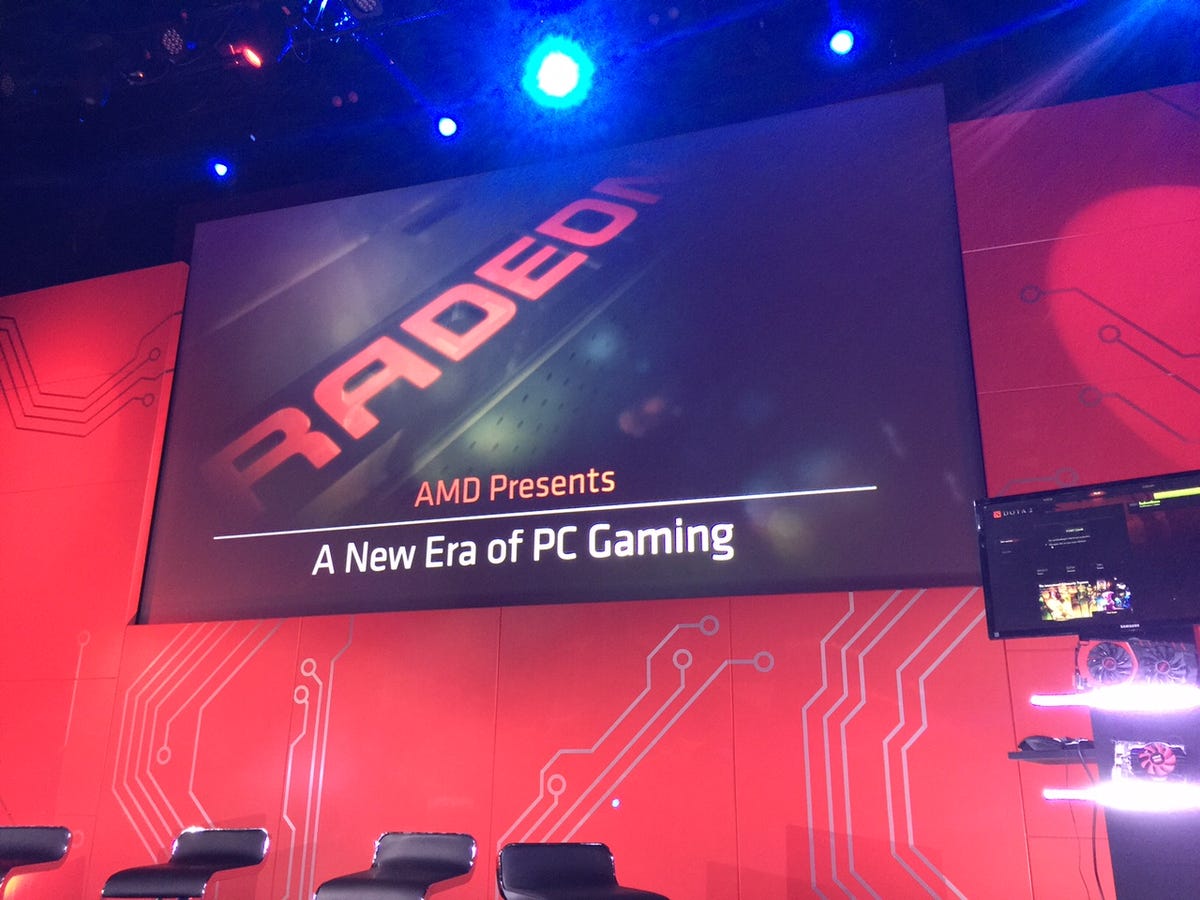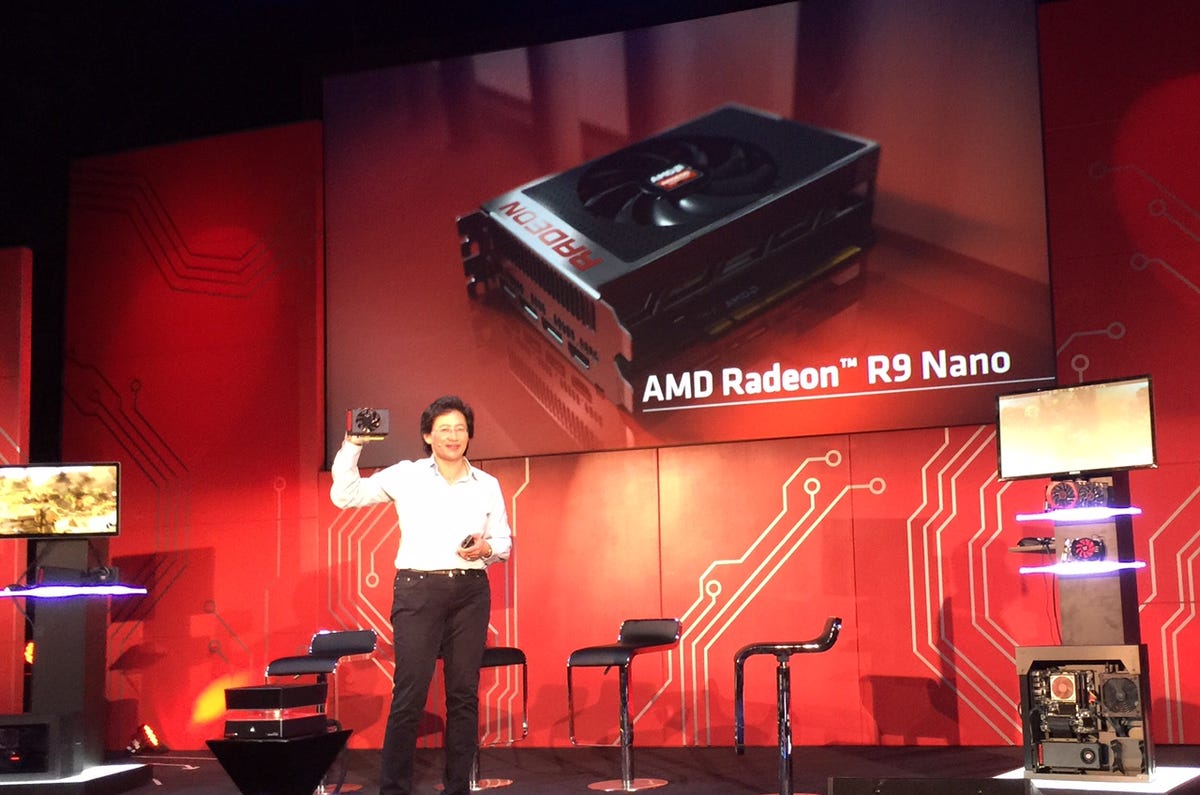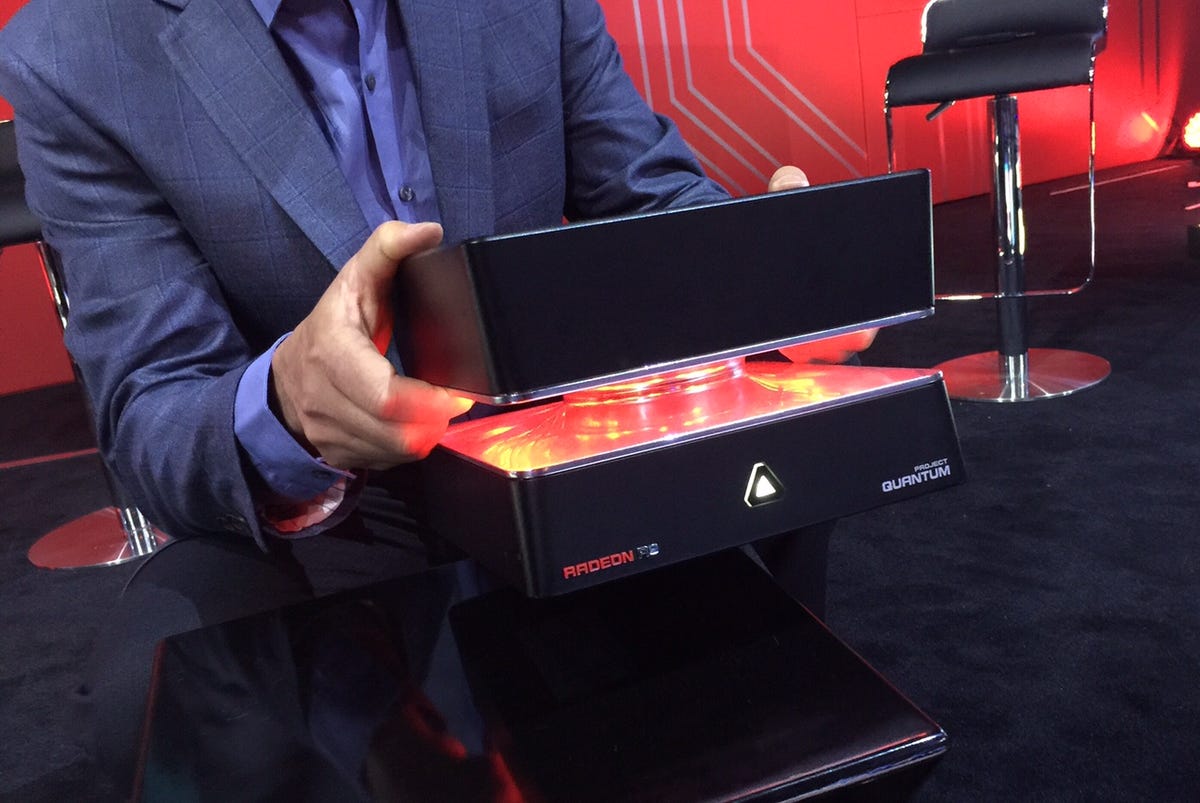
CNET/Dan Ackerman
LOS ANGELES — A new line of PC graphics cards are coming from chip-maker AMD, the company announced during the annual E3 video game trade show and exposition. The new Radeon R9 Fury X, Nano and 300 series, and the R7 300 series graphics cards are targeted at gamers looking to explore 4K, virtual reality and other new trends that are currently pushing PC hardware.
The new graphics hardware was announced at a separate PC gaming event taking place alongside, but separate from, the E3 show. Set at the Belasco Theater in downtown Los Angeles, AMD hosted what the company calls a “fireside chat” with company Chief Gaming Scientist Richard Huddy. Later in the evening of June 16, the same theater will host an open-to-the-public event called the PC Gaming Show, showing off much of the same hardware and software.
While graphics card rival Nvidia has generated much of the PC graphics buzz lately with developments such as the Titan X desktop GPUs and the G-Sync platform for syncing graphics output and display refresh rates for smoother-looking gameplay, AMD shouldn’t be counted out. The company’s GPUs power both the Xbox One and PlayStation 4, as well as Apple’s just-refreshed 15-inch MacBook Pro . AMD also has its own version of GPU/display syncing, called Freesync, but we have yet to get a hands-on session with that technology.
New graphics cards for eSports and 4K
The flagship new AMD GPU is the Radeon R9 Fury, which AMD calls “the most advanced and innovative GPU ever created for the enthusiast market.” It uses high-bandwidth memory (HBM) to deliver what the company claims is three times the performance per watt from its DDR5 RAM. The pitch for the high-powered card is that it’s perfect for both 4K gaming and the new wave of virtual-reality hardware, including the Oculus Rift, which is already known for its very high-end hardware requirements.


CNET/Dan Ackerman
The other selling point of the R9 Fury is that it’s relatively small, with cards running 7.5 inches long. That should allow the card to fit into more small-form-factor PC cases, such as those designed for living room use. The briefly glimpsed R9 Nano is an especially small card, only 6 inches long, and pitched as a high-performance, low-power card.
Beyond that, the R9 300 is being pitched as great for 4K gaming, or for playing games at 1,920×1,080 resolution but 4K details. It uses an AMD technology called Virtual Super Resolution, that the company says rivals the look of 4K, even on 1080p displays.
The Radeon R7 300 is being positioned as great for eSports, where you need effortless 60-frames-per-second performance, but can get away with lower resolutions, and less graphically challenging games.
A living room PC for 4K
To demonstrate the flexibility of the new GPU designs, AMD also showed off a new gaming desktop PC prototype chassis, designed to replicate the power of a full-size desktop tower in a small living-room-friendly design.


CNET/Dan Ackerman
The prototype showed off is called Project Quantum, and it includes two of the new R9 Fury chips. On stage, it looked like two of Alienware’s Alpha PC gaming desktops sandwiched together. As a prototype, its unlikely we’ll see this exact system for sale from PC makers, but with a push towards living room PC gaming, we can expect to see similar designs in the future.
All of the new AMD graphics cards are ready for Windows 10 and new gaming graphics technologies such as DirectX 12, from Microsoft. Both the R7 300 and R9 300 cards will be available starting June 18, with different configurations costing $109 to $429 in the US. The R9 Fury is coming June 24, and will cost $649 in the US.
Follow all the latest news from E3 2015 on CNET and GameSpot.




